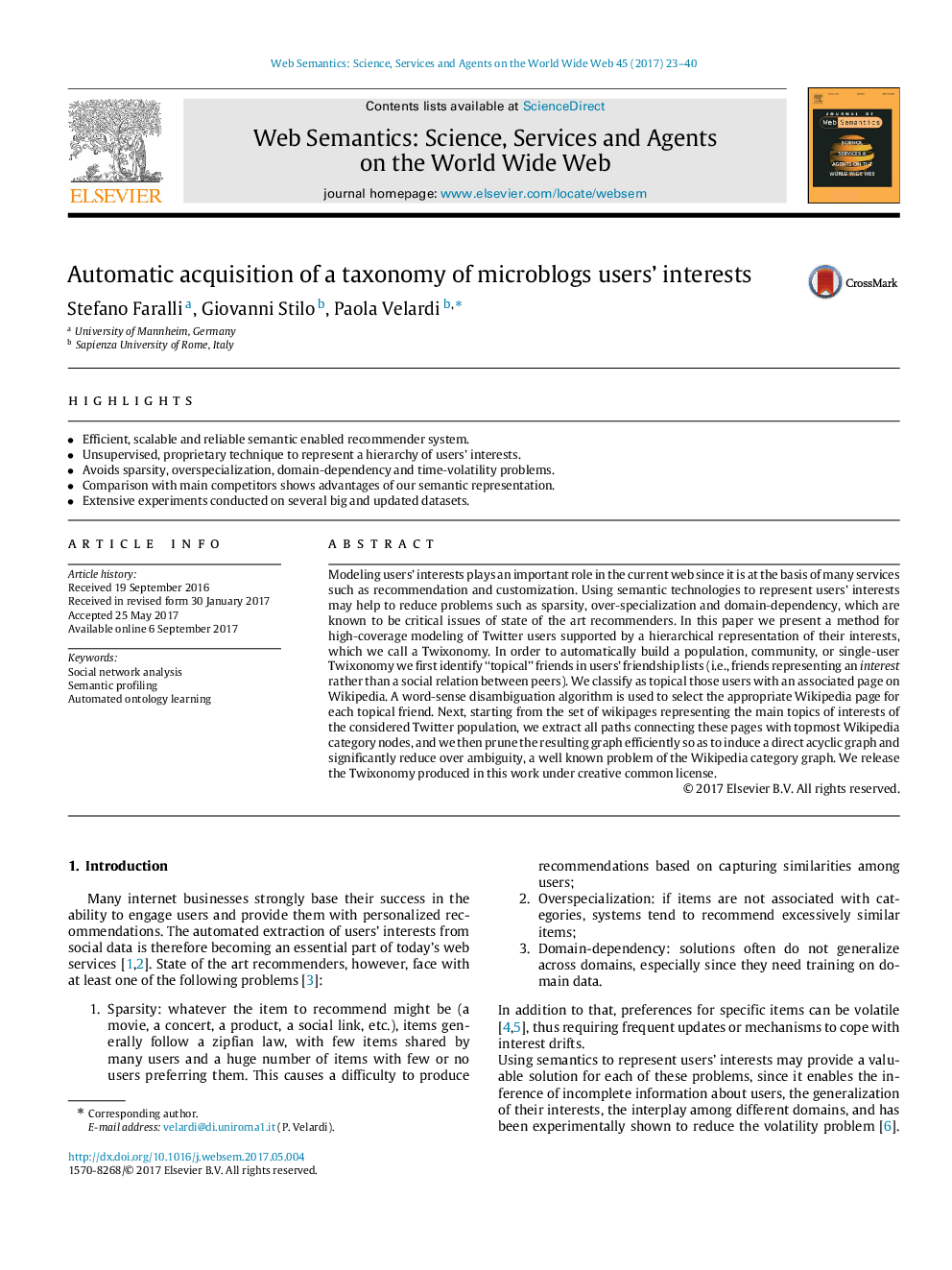| Article ID | Journal | Published Year | Pages | File Type |
|---|---|---|---|---|
| 6950489 | Web Semantics: Science, Services and Agents on the World Wide Web | 2017 | 18 Pages |
Abstract
Modeling users' interests plays an important role in the current web since it is at the basis of many services such as recommendation and customization. Using semantic technologies to represent users' interests may help to reduce problems such as sparsity, over-specialization and domain-dependency, which are known to be critical issues of state of the art recommenders. In this paper we present a method for high-coverage modeling of Twitter users supported by a hierarchical representation of their interests, which we call a Twixonomy. In order to automatically build a population, community, or single-user Twixonomy we first identify “topical” friends in users' friendship lists (i.e., friends representing an interest rather than a social relation between peers). We classify as topical those users with an associated page on Wikipedia. A word-sense disambiguation algorithm is used to select the appropriate Wikipedia page for each topical friend. Next, starting from the set of wikipages representing the main topics of interests of the considered Twitter population, we extract all paths connecting these pages with topmost Wikipedia category nodes, and we then prune the resulting graph efficiently so as to induce a direct acyclic graph and significantly reduce over ambiguity, a well known problem of the Wikipedia category graph. We release the Twixonomy produced in this work under creative common license.
Keywords
Related Topics
Physical Sciences and Engineering
Computer Science
Information Systems
Authors
Stefano Faralli, Giovanni Stilo, Paola Velardi,
